Volvo XC40 T5 Recharge review: this plug-in hybrid is smooth and slick – with one notable exception
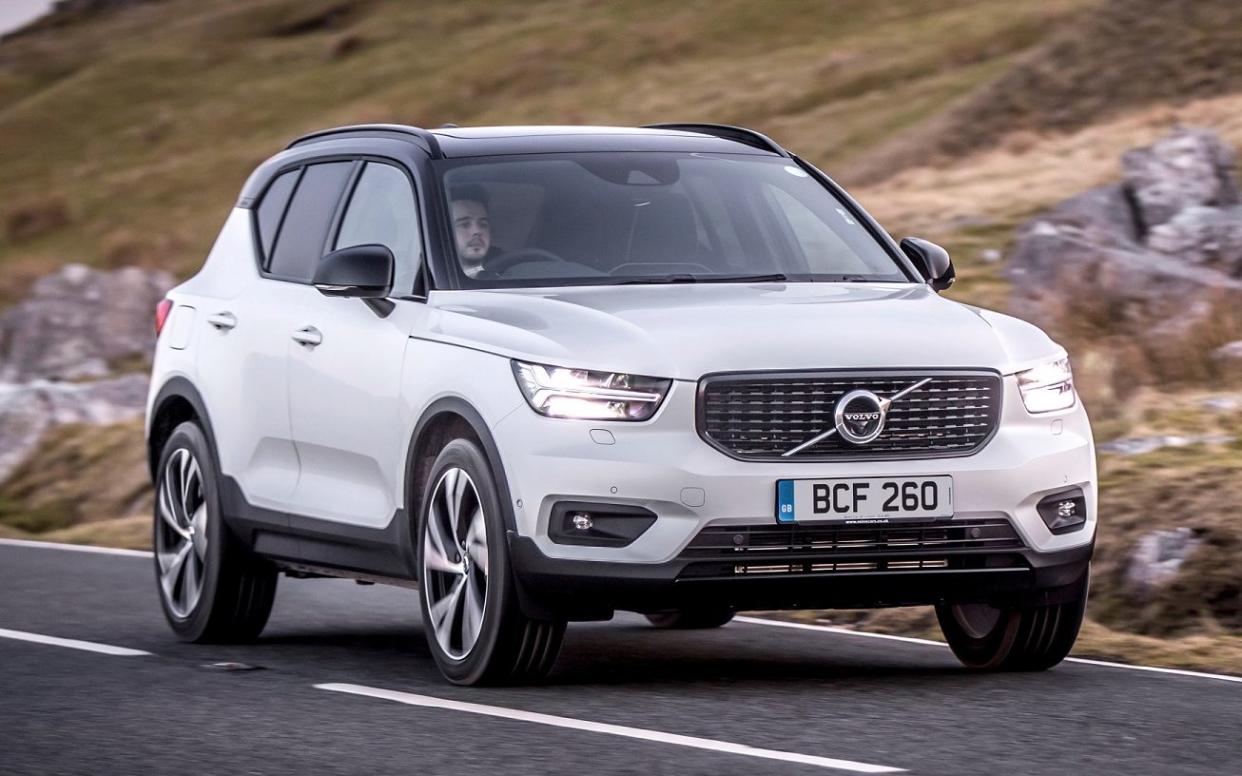
At the back end of last year, my esteemed colleague Andrew English reviewed Volvo’s first production electric car, the XC40 Recharge. It was, not to put too fine a point on it, very expensive, so much so that it really struggled to justify its price.
Here, however, is a different kind of plug-in Volvo. This one is called, rather confusingly, the XC40 T5 Recharge, and in Volvo’s slightly convoluted parlance, the T5 part signifies that there’s a petrol engine involved. That’s right, it’s another one of those plug-in hybrids, beloved of company car user-choosers and those who like the idea of a fully electric car, but aren’t quite ready or able to make the leap.
But is it, too, going to be hamstrung by a high price? Not at first acquaintance. The range starts from a fraction over £37,000, which is almost exactly where you’ll find plug-in hybrid rivals like the Peugeot 3008 and Ford Kuga.
Past experience with the XC40, however, suggests its level of finish is a cut above both of these rivals. So far from being overly costly, this particular plug-in Volvo might just be quite competitively priced. But have corners been cut to make it so?
Pros
Beautiful interior
Quiet, punchy engine
Comfortable ride quality
Cons
Sharp, unpredictable regenerative braking
Slightly floppy body control
Electric range could be better
Two of a kind
Unusually, the Volvo T5 Recharge isn’t the only plug-in hybrid XC40 in the range. You can also have a less potent plug-in in the form of the T4 Recharge; the price difference between the two is exactly £2,000, and the power difference is exactly 50bhp, the former putting out 258bhp and the latter 208bhp.
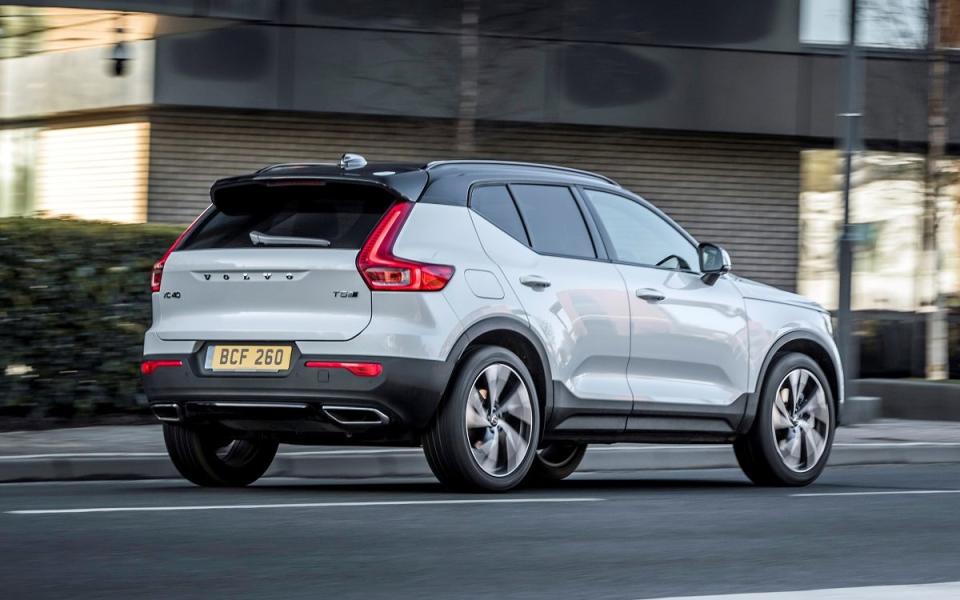
Both models have a 1.5-litre three-cylinder petrol engine, and both have the same-sized battery, a 10.7kWh lithium-ion unit that’s a little small by the standards of the class; no surprise, then, that the claimed electric range of up to 27 miles isn’t quite up with the best. Fast-charging the battery from empty to full takes 2.5 hours on a fast charger, or up to 6 hours on a domestic three-pin socket.
You can opt for the plug-in powertrain in five of the seven slightly bewildering models in the XC40 line-up; it isn’t available with either of the cheaper Momentum versions, making the Inscription Expression your starting point. That gives you dual-zone climate control, a large central touchscreen, sat-nav, LED headlights and cruise control, making it reasonably well equipped but not overly so.
Upgrade to R-Design for sportier looks or the full-fat Inscription for more toys, and then add the Pro pack to either for heated front seats, a heated front windscreen, and headlights with see-round-the-corner bending beams.
Size and space
In the business, we’d call this a compact SUV, though the person cowering next to you at the lights in their Toyota Aygo will probably disagree. Indeed, Volvo’s clever styling makes the XC40 look smaller than it actually is; it’s four and a half metres long, or as near as makes no difference, which makes it quite a bit bigger than a Nissan Qashqai or Range Rover Evoque and about the same size as a Volkswagen Tiguan.

Happily, you get the dividend of this space – and the XC40’s high roof – inside. Space is plentiful, and because the sides of the car are quite sheer, there’s an excess of head and shoulder room. Combined with the big windows, that makes the XC40 feel very spacious, even in the back seats, while up front there’s lots of storage.
You won’t really care too much about that, though, because you’ll be too busy swooning over the loveliness of the XC40’s interior. Swathes of leather and chunky, high-quality plastic cover the dashboard, and there are bleached, driftwood-effect inlays on Inscription cars like the one we’ve tested, which you’ll feel an overwhelming urge not only to look at, but to touch.
With this specification, you get an Orrefors crystal gear selector, too, which in this otherwise tastefully restrained space feels a little excessively bling. It’s lovely to hold and to use, however, and the rest of the switchgear feels hefty and well damped.
Minimalist interior appeals
The virtual dials are minimalist to the point of being a little bland to look at, but as a result they manage to convey a lot of information in a very easy to read way; for example, on just one virtual gauge you’ll find the remaining battery and fuel as well as which power source the car is using, how much throttle you can use before the petrol engine it kicks in, and whether it already has or not. It would be very easy to turn this into a confusing mishmash of numbers, yet all this information is discernible at a moment’s glance.

Volvo’s standard entertainment system takes centre-stage, a nine-inch portrait screen powered by a software system that’s starting to feel a little clunky in places; it was never the most intuitive even when it was new. And while it’s good that the climate controls remain on the screen all the time, so you don’t have to go foraging around in some distant menu for them, they’re just as fiddly (and therefore distracting) to use on the move as any other touchscreen-based system.
These plug-in versions of the XC40 get exactly the same-sized boot as their petrol counterparts, which makes a change given most plug-ins lose boot space to make way for batteries beneath the boot floor. You even get the option of a spare wheel, a rarity for the same reason, which speaks to Volvo’s clever packaging.
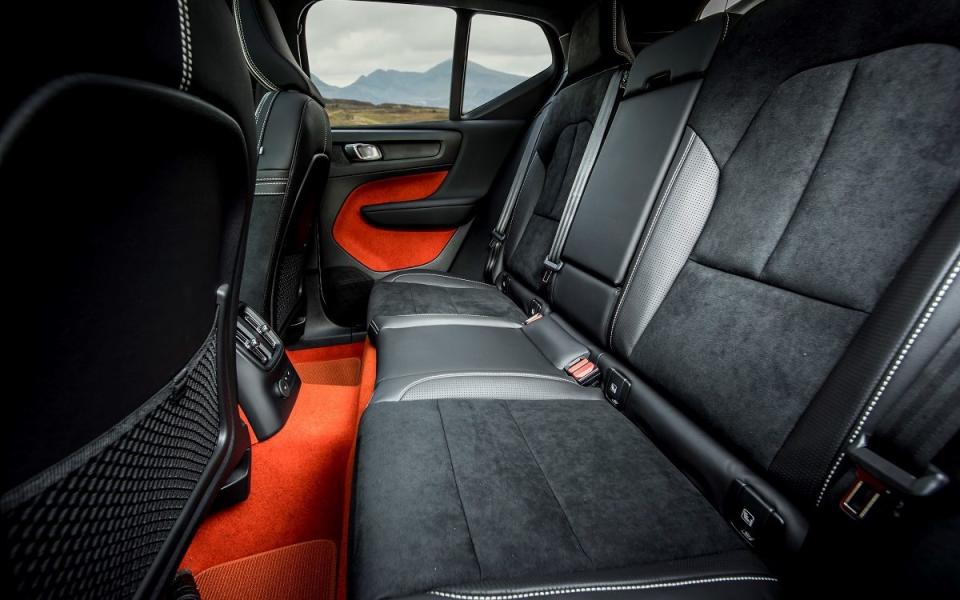
Granted, the boot itself isn’t all that versatile – the rear seats don’t do any special tricks like sliding, and the 60/40 split is conventional, but there is a least a ski hatch for you to slide long, slim items through while retaining the use of the outer seats. What’s more, the boot itself is a usefully square shape with a load lip that’s flush to the floor, which makes it easier to load heavier items of luggage.
Pounds and pence
You may have noticed a slight disparity between the £37,000-odd starting price we mentioned earlier and the £43,095 cost, before options, of our test car. The reason for that is that ours is the T5 version in fully tarted-up Inscription Pro form, and that means it has all the equipment and the more potent of the two engines.
That’s a fairly high price at first glance, but when you start to compare like-for-like, it actually seems very reasonable. For example, that figure won’t even get you into a base-model Evoque or Jaguar E-Pace plug-in hybrid, while Peugeot will charge you more for a 3008 Hybrid with a similar specification – and that’s a smaller car with a less luxurious interior, not to mention a less prestigious badge.

A trip to the options list will reveal a couple of niggles; items you might expect to be supplied as standard, but which Volvo expects you to pay more for. Smartphone integration, for example, is an extra £300 (it’s almost universally a standard feature these days), and if you want a Type 2 charging cable so you don’t have to charge your car at a snail’s pace from a three-pin socket, you’ll pay £50 for the privilege.
This sort of stinginess is particularly unbecoming from the company that once gave the world the seatbelt free of charge; mind you, even with those options added on, the XC40 offers decent bang for your buck.
Solid resale values and relatively affordable servicing mean running costs should be reasonable, but beware if you’re choosing the XC40 as a company car; its CO2 emissions figures aren’t as low as its rivals’, and that’ll make it costly to tax.
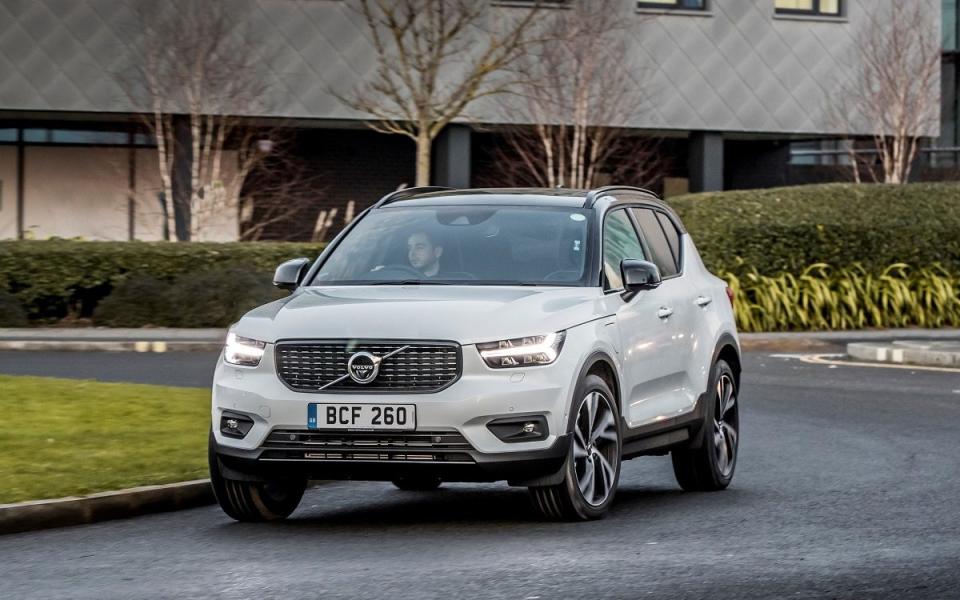
And while, as we always say, the official fuel consumption figures on plug-in hybrids mean next to nothing in the real world, they are at least useful for comparison. By that standard, however, the XC40 looks like it’ll be less efficient than most of its rivals once you’ve run the battery flat.
Out and about
The first thing you’ll notice about the XC40 is that its brakes are not terribly easy to use. “Come on, Robbins,” you’re saying. “Just press the big pedal in the middle.” Well, yes, but when you do, the XC40 slows at one rate, and then if you nudge it just a shade harder, the pedal suddenly firms up and you’re brought to a shuddering halt with the sort of sharpness that’s liable to plant your face on to the windscreen.

The problem is, Volvo has never been very good at mastering the transition from regenerative braking, which uses the resistance of the electric motor to slow the car and generate power at first, to friction braking, where the car’s actual brakes are brought to bear when you need more braking force. This means you have to have singularly deft foot control if you’re to have any hope of coming to a halt with at least some of your dignity still intact.
Get past this frustrating trait, though, and it proves to be a fly in an otherwise rather creamy ointment. For example, where some plug-ins feel a little jerky as they switch between electric and petrol power, the XC40 does so seamlessly; when the petrol engine kicks in, too, it’s quiet and smooth, and even when you push it hard, its voice never rises to unacceptable levels. In fact, the racy warble it produces is actually rather appealing.
Performance
And it is quick. It doesn’t feel that way when you first floor the accelerator pedal, as it takes a second or two for the petrol motor to kick in, but if it’s already running you’re treated to a satisfyingly lusty swell of mid-range torque that’s ideal for easy overtakes and swift merges into motorway traffic. Even when you’re being more restrained, acceleration in the XC40 always feels effortless, the electric motor filling in the gaps while the petrol engine gets going.
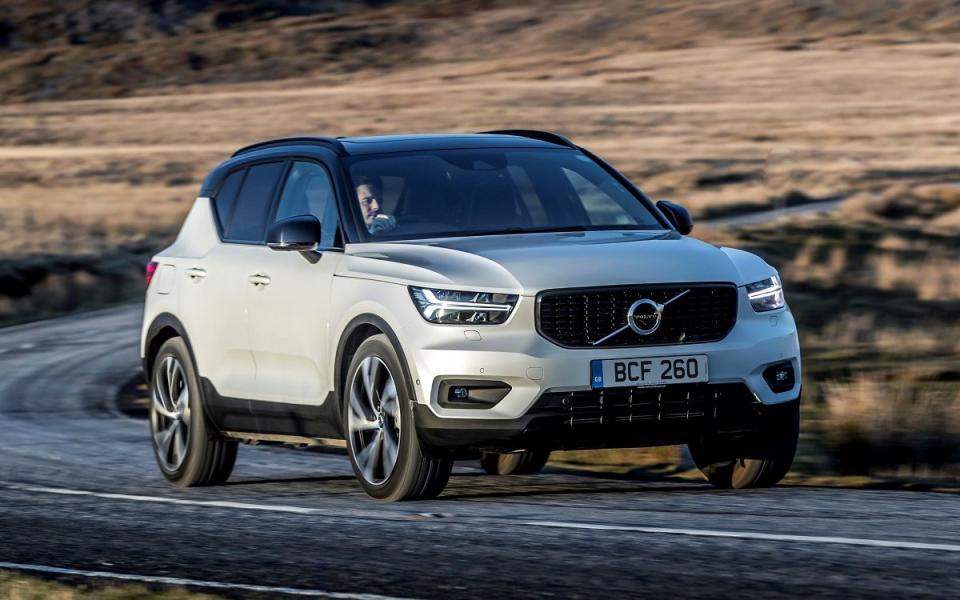
As you’d expect, Volvo’s engineers have set up the XC40 for comfort, and by and large they’ve succeeded. Around town the soft suspension soaks up bumps; even deep potholes pass beneath with little more than a muted thump.
If you’re really shifting along an undulating road, you can catch out the suspension as it wafts off crests and then thumps down on its bump stops, but given most XC40s are unlikely to be driven in this manner you can forgive it this in favour of its urbane deportment the rest of the time.
Likewise, the fact the XC40 is a bit soft and sloppy if you really throw it into bend is neither here nor there, especially as the nose turns in crisply and keenly, and there’s so much grip and traction on offer you can still flow it along a fast A-road and enjoy yourself while doing so.
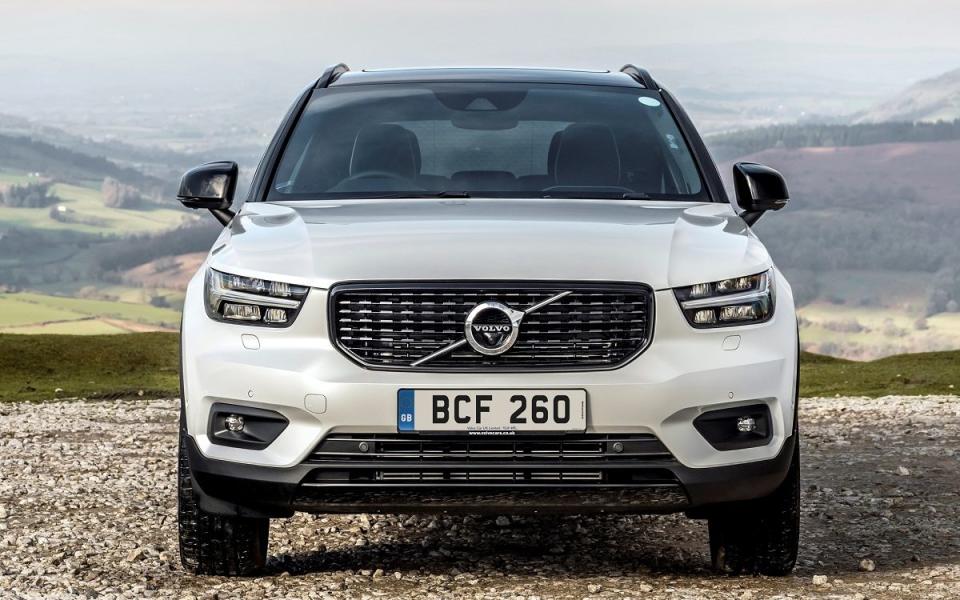
As you’d hope, though, it’s at its best at speed on the motorway, where the suspension smoothes the way; what impresses more, though, is the lack of wind and road noise, especially given the large-diameter tyres, bluff nose and tall windscreen. This, then, is an extremely serene car in which to undertake a long trip.
The Telegraph verdict
We might not have thought much of the all-electric version of the XC40, then, but this plug-in hybrid is by contrast very likeable.
Granted, its electric range isn’t quite as good as you might hope. And it’ll cost you more to tax as a company car than some other plug-ins, and probably more to fuel too – especially if you aren’t planning to plug it in all that much.
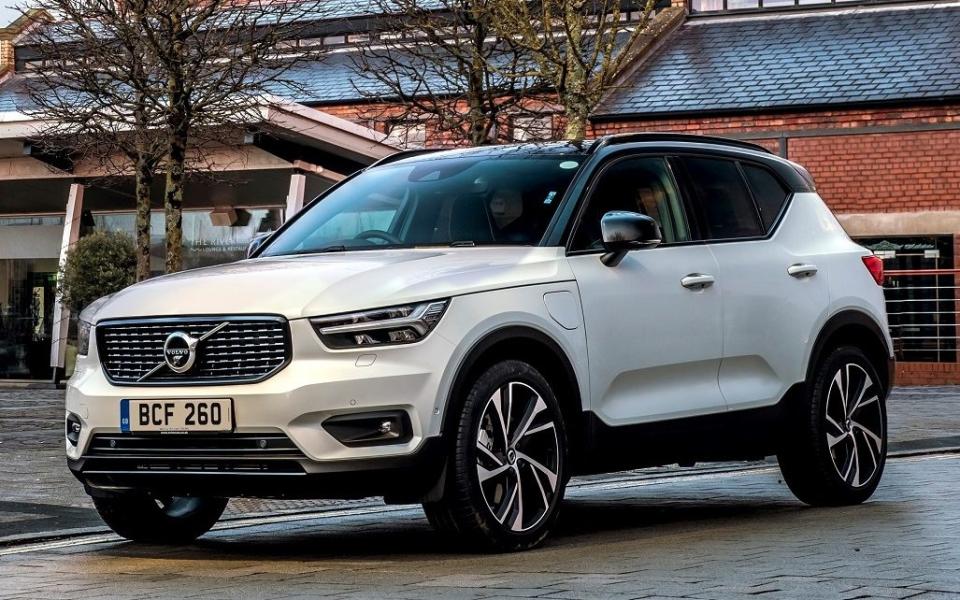
Conversely, if you’re buying privately, the XC40 is comparatively well priced for what it is; indeed, you won’t find a plug-in hybrid with this combination of pace, class and quality for less. That you pay no practicality penalty compared with the standard car is the icing on the cake.
But what impresses most about the XC40, with the exception of the brakes, is how smooth and slick it is to drive. This, in short, is a plug-in par excellence.
Telegraph rating: Four stars out of five
The facts
On test: Volvo XC40 T5 Recharge
How much? £43,095 on the road
How fast? 112mph, 0-62mph in 7.0sec
How economical? 134.5mpg (WLTP Combined)
Engine/gearbox: 1,477cc three-cylinder petrol engine, 258bhp (total combined maximum output), seven-speed twin-clutch automatic gearbox, front-wheel drive
The electric bits: AC synchronous motor with 10.7kWh Li-ion battery, 3.7kW on-board charger, Type 2 charging socket
Electric range: 27 miles
CO2 emissions: 47g/km
VED: £0 first year, £480 next five years, then £145
Warranty: 3 years / 60,000 miles
Boot size: 452 litres
Spare wheel as standard: No (optional extra)
The rivals
Peugeot 3008 Hybrid 300 GT
295bhp, 235.4mpg, £44,810 on the road
The 3008 struggles to justify its high price against the Volvo. Yes, you get a bit more power, but while its interior is quite smart it can’t hold a candle to the out-and-out luxury of the XC40; neither is it as comfortable or as smooth to drive. In fact, good though the 3008 is, in this form it’s hard to see why you’d choose it instead.
Jaguar E-Pace P300e R-Dynamic S
305bhp, 143.1mpg, £45.995 on the road
Once again, there’s more power from Jag’s XC40 rival, but this is an awful lot of money to spend on a base-spec car, especially one that isn’t quite as well-mannered as the Volvo. However, sleek looks and swish interior mean it’s every bit as desirable – perhaps even more so.
BMW X1 xDrive25e M Sport
216bhp, 156.9mpg, £40,580 on the road
It might look like a bit of a bargain next to the XC40, but add the options to achieve the same sort of specification and the cost soon mounts. Still, this is a more rakish alternative to the Volvo, with sharper driving dynamics, although there is a trade-off in terms of comfort. And it has to be said, the X1 simply doesn’t feel quite as special inside, either.
For new and used buying guides, tips and expert advice, visit our Advice section, or sign up to our newsletter here
To talk all things motoring with the Telegraph Cars team join the Telegraph Motoring Club Facebook group here

 Yahoo News
Yahoo News 
